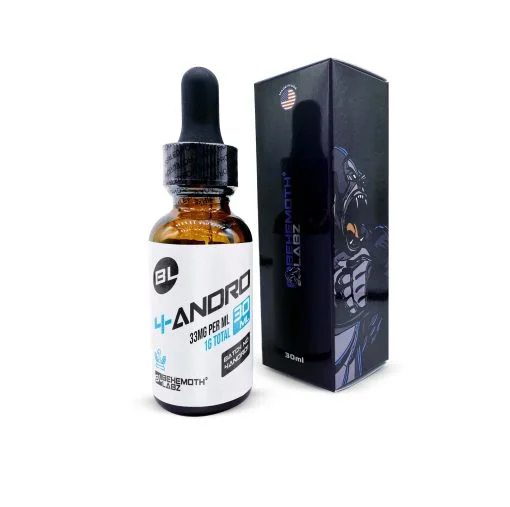SARMs
RAD 150 (TLB 150) Review: Research Benefits, Uses, and Potential Side Effects
RAD 150, also known as TLB 150, is an experimental compound within the class of Selective Androgen Receptor Modulators (SARMs) that has attracted growing interest in preclinical research. As a benzoate ester derivative of RAD 140, RAD 150 is designed to offer enhanced chemical stability, extended half-life, and improved bioavailability. All of these attributes may make RAD 140 a valuable subject of investigation in pharmacological and biomedical studies.
Its selective mechanism of action and favorable pharmacokinetic profile position RAD 150 as a candidate for examining androgen receptor modulation in tissue-specific models. With demand increasing among researchers, it is essential to critically assess its properties, mechanisms, and potential experimental applications.
This article provides a comprehensive overview of RAD 150, including its molecular characteristics, studied effects in laboratory settings, and commonly reported outcomes in research. It is important to note that RAD 150 is strictly intended for laboratory use and not for human or veterinary consumption.
What is RAD 150?
RAD 150, also referred to as TLB 150, is a synthetic benzoate ester derivative of RAD 140. It was engineered to exhibit greater chemical stability and a longer half-life in experimental settings. The esterification process increases RAD 150’s resistance to metabolic breakdown, thereby improving its systemic availability and suitability for extended research protocols.
Its chemical structure allows for steady plasma concentration over time, making it a viable candidate for investigations requiring sustained exposure.
RAD 150 Key Features
The following features make RAD 150 an ideal option for research investigations.
- Highly stable
- Prolonged half-life
- Better absorption rate
- Improved efficacy
- High potency
- Enhanced bioavailability
- Effective tissue-selective pharmacology
How Does RAD 150 Work?
RAD 150 is designed to selectively interact with androgen receptors, predominantly in skeletal and muscular tissues, based on in vivo animal studies. This selective receptor binding is hypothesized to influence anabolic pathways without widespread activation of androgenic effects observed in other tissues.
According to preclinical findings, RAD 150 may produce biological effects that are comparable to endogenous androgens in certain pathways, but with more targeted activity. Notably, it has been shown not to significantly interfere with systemic hormonal regulation in some animal models, although post-exposure monitoring remains essential.
RAD 150 Uses
In research environments, RAD 150 has been explored in a variety of investigational models, including those focused on:
- Mitigating muscle atrophy in experimental systems
- Supporting exploratory studies related to musculoskeletal conditions
- Enhancing tissue-specific anabolic activity in vivo
- Investigating mechanisms of androgen receptor modulation
Preliminary studies have also extended into models related to neurodegeneration and oncological contexts; however, these are highly experimental and should not be extrapolated beyond a research framework.
Potential Research Applications for RAD 150
Scientific studies using RAD 150 in animal models and in vitro systems have highlighted several potential applications that merit further exploration:
1. Androgen Receptor Modulation
RAD 150 has demonstrated selective affinity for androgen receptors in preclinical studies, offering a potential avenue for examining tissue-targeted receptor interactions without significant off-target effects.
2. Protein Synthesis Pathways
Some investigations suggest that RAD 150 may influence protein metabolism pathways, making it a candidate for studying cellular mechanisms related to protein turnover.
3. Cellular Energy Utilization
Research has explored RAD 150’s impact on cellular energetics, particularly in models assessing mitochondrial efficiency and ATP production in muscle tissue analogs.
4. Skeletal Health
In vivo rodent studies have indicated that RAD 150 may influence bone mineral density through androgen receptor pathways, providing a platform for further exploration of skeletal adaptation.
5. Tissue Regeneration Models
Ongoing research is examining RAD 150’s role in tissue regeneration, particularly in models of muscular and skeletal damage, although these findings remain preliminary.
RAD 150 Dosage (For Research Purposes Only)
Typical dosages used in preclinical research models range from 5 mg to 10 mg per day, administered over an 8-week cycle. These values are for informational purposes only and should be calibrated based on the specific study design, animal model, and research goals.
Post-cycle analysis and monitoring (PCT protocols) are often implemented to observe hormonal normalization, particularly in endocrine-focused studies.
RAD 150 Stacking (Research Context Only)
In research settings, RAD 150 is sometimes studied in combination with other compounds such as Cardarine, Ibutamoren, Ligandrol, or YK-11 to explore synergistic effects. Such combinations aim to investigate pathways related to energy metabolism, tissue preservation, or receptor co-modulation.
Before and After – RAD 150 Observations in Research Models
Experimental findings have shown that research models exposed to RAD 150 exhibited measurable changes in tissue composition, energy levels, and receptor activity. In animal studies, consistent administration was associated with statistically significant changes in muscle and bone-related biomarkers. However, all outcomes were dose-dependent and varied by model type, environmental conditions, and compound purity.
These results are strictly preliminary and must not be interpreted as conclusive or indicative of clinical efficacy.
Conclusion
RAD 150 (TLB 150) is a synthetic compound under active investigation for its selective androgen receptor modulation and prolonged bioavailability. Its chemical enhancements offer advantages in research environments that demand sustained exposure and precision-targeted activity. While initial data from preclinical models is promising, RAD 150 remains an experimental compound strictly for laboratory research use.
No human consumption is endorsed or permitted, and its application is limited to controlled scientific studies.
FAQs
Where to buy RAD 150 (TLB 150) for research?
RAD 150 can be sourced from research chemical suppliers such as BehemothLabz, which is known for providing standard-grade compounds for laboratory use only. Ensure all products are used strictly within legal and ethical research parameters.
Is RAD 150 a steroid?
No. RAD 150 is a selective androgen receptor modulator (SARM) and a chemical derivative of RAD 140. It is not a steroid and operates via a different mechanism.
What is the parent compound of RAD 150?
RAD 150 is chemically derived from RAD 140, with added esterification to increase stability and half-life.
References
- Kumar, Ankur. “RAD 150 SARM Reviews: Side Effects, Cycling, Dosage & Results.”
- Force, Air, et al. “RAD 150 Review: Dosage, Results, Side Effects, & More.”
- Vasireddi, Nikhil, et al. “Athlete Selective Androgen Receptor Modulators Abuse: A Systematic Review.” The American Journal of Sports Medicine (2025): 03635465241252435.











